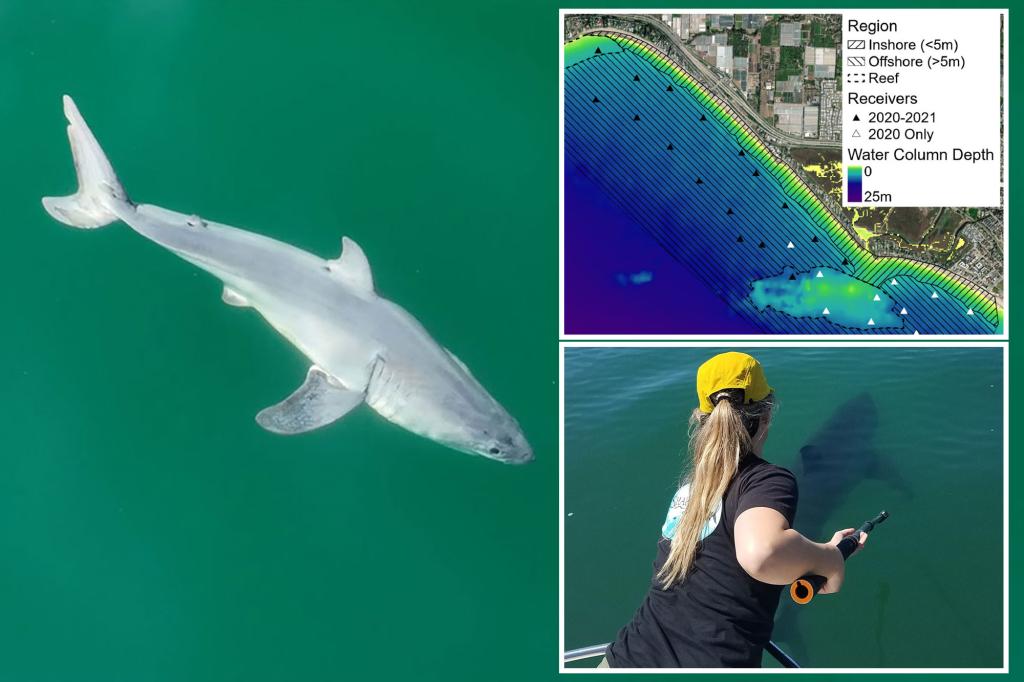The approaching summer season brings with it an increased presence of sharks near coastal areas, leading to concerns about potential encounters with these apex predators. Recent research conducted at Padaro Beach in California sheds light on why sharks, particularly great whites, are becoming more common near shorelines. The study, published in Frontiers In Marine Science, found that young shark pups are gravitating towards shallow waters in large numbers, revealing insights into their behavior and preferences. This discovery has sparked further interest in understanding the reasons behind this phenomenon.
One significant factor contributing to the young sharks’ attraction to the shore is the absence of maternal care after birth. Without adult supervision, these pups tend to congregate in nursery areas where they can grow and develop safely. Observations at a Santa Barbara beach nursery, where 22 baby sharks were tracked and studied from 2021 to 2022, indicate that the warm water near the surface is particularly appealing to these juveniles. Researchers found that the sharks actively adjust their vertical position in the water column to maintain a temperature range of 16° to 22°C, optimizing conditions for growth and efficiency within the nursery environment.
While temperature plays a crucial role in the sharks’ choice of habitat, it is not the sole determining factor. Emily Spurgeon, the lead author of the study, highlights the need to explore other aspects influencing the sharks’ behavior, such as social dynamics and predator avoidance. Future investigations aim to delve deeper into the complexities of nursery environments to better understand the interconnected relationships and behaviors of young sharks. By studying individual movements and interactions among juveniles within nurseries, researchers hope to unravel the intricate dynamics that govern these communal spaces and identify additional factors shaping the sharks’ preferences.
The findings from this research provide valuable insights into the behavior and habitat selection of young sharks, shedding light on their movements and preferences in coastal waters. Understanding why these baby sharks are gravitating towards shallow areas near shorelines is essential for developing strategies to mitigate potential human-shark interactions and ensure the coexistence of these predators in shared environments. By gaining a deeper understanding of the factors driving young sharks towards nursery areas, researchers can inform conservation efforts and enhance safety measures for beachgoers and swimmers during the summer season when shark encounters are more likely. Further research is needed to uncover the complexities of nursery habitats and the intricate relationships that shape the behavior of young shark populations.


